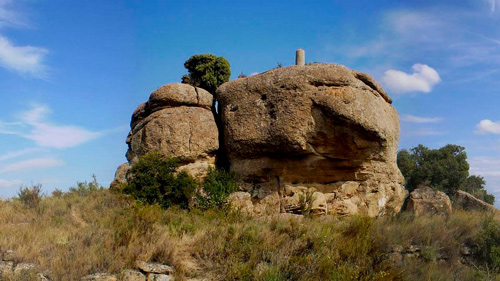Celtic temple of Peña Redonda
Celtic temple of Peña Redonda
At the top of one of the hills that define the topography of the Hondon meander, there is a solitary rock surrounded by vineyards, it is called Peña Redonda.
It is believed that it could have been used in antiquity as a ritual temple by one of the Celtiberian peoples who inhabited the area, specifically the Berones, Vascones or Pelendones, among others. Although no archaeological studies have been conducted as such, some amateur studies, although not conclusive, can serve as a guide to point out this natural accident as a posible sanctuary, some of the evidences are:
- The location of the temples in a prominent natural site, such as a rock, a tree or a river, is very common among Celtic peoples.
- The existence of some marks in the rocks that could have been made by human hands.
- Some access stairs to the top of the rock.
- Multiple holes at the top, which may have been formed by natural action of erosion, or have been made by human action, forming several bowls for ritual use.
- A possible concavely sacrificial pile, drilled at one end, next to a small pool, where the sacrifice would be deposited.
- The existence of a mark on a vertical surface to the right of the stairs with a wave shape, which has been intended to be interpreted as a moon or bird symbol, closely related to death.
References: Duque, Angel Montenegro. Colonizaciones y formación de los pueblos prerromanos (1200-218 a.C). Editorial Gredos, 1989. https://santuarioceltibero.jimdofree.com, page of the study made by Jesús Ángel García Gamarra.

